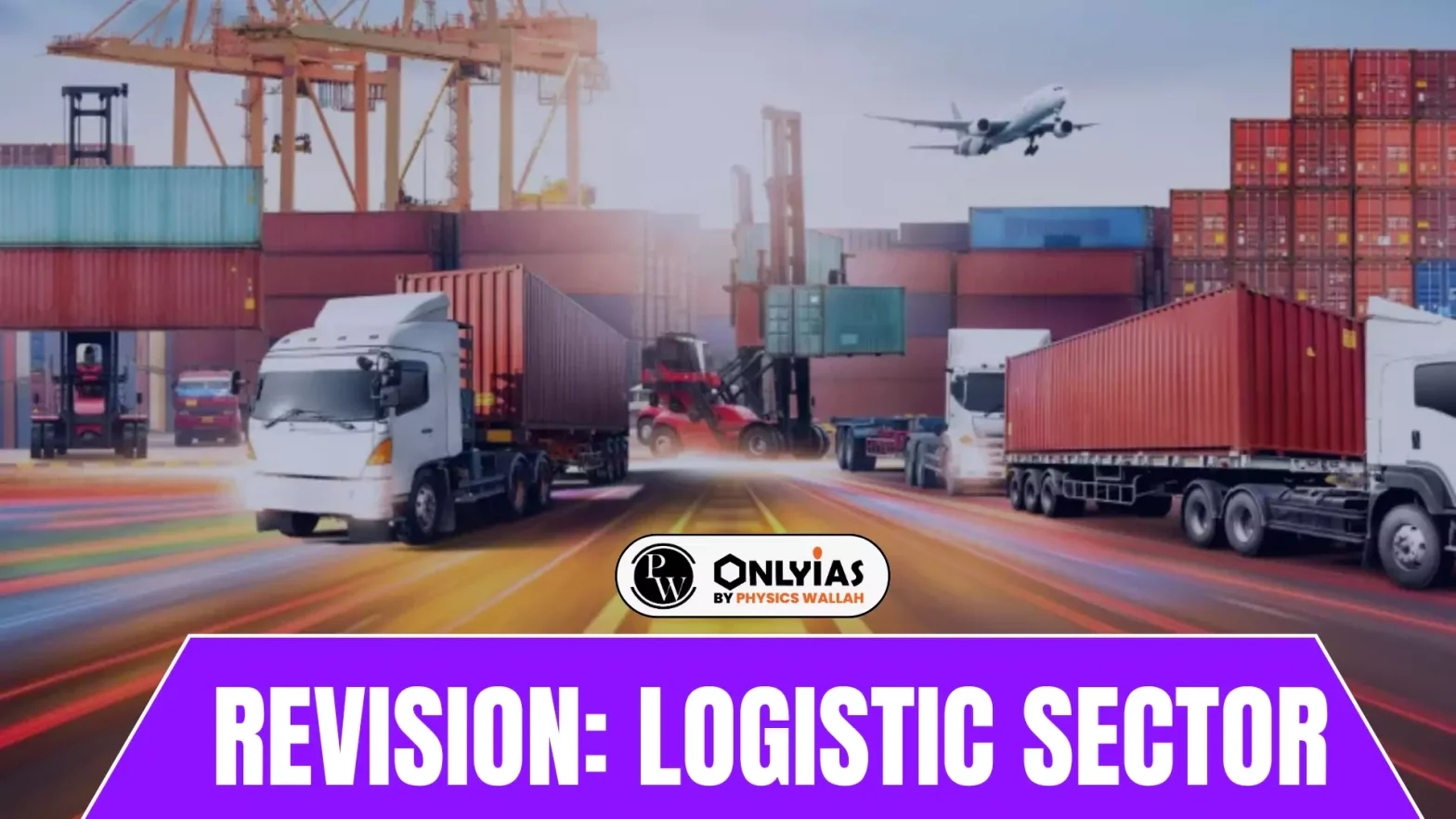Indian Logistics Sector
- What is Logistic: Logistic is transporting materials from one place to another
- Importance of Logistic: An efficient, competitive and resilient logistics ecosystem is pivotal to boost exports.
- Logistic Sector in India: Despite multiple challenges, India has made substantial progress in trade-related logistics, reflected in leading global indices.
- The Indian logistics sector is a sunshine industry because it has a bright future. It is going through a phase of transformation on account of various reform initiatives and policy changes.
- The major reforms include the GST, roll out of E-Way bill and the sector being granted infrastructure status.
Enroll now for UPSC Online Classes
Significance
Five significant points of the logistics sector
- Efficiency Boost: Logistics ensures streamlined supply chains, leading to increased operational efficiency and reduced costs.
- Global Trade Facilitation: Efficient logistics supports international trade by connecting producers, suppliers, and consumers across borders.
- Job Creation: The logistics sector provides employment opportunities and contributes to economic growth.
- Infrastructure Development: Investments in logistics infrastructure (ports, roads, warehouses) enhance overall connectivity.
- Customer Satisfaction: Well-managed logistics ensures timely delivery, improving customer satisfaction.
Issues/Challenges
- High Cost of Logistics: Challenges in accessing finance, underdeveloped infrastructure, poor connectivity, and unfavourable modal mix contribute to high logistics costs.
- Coordination Due to Multiple Stakeholders’ Involvement: Logistics involves various components under different regulatory oversight, leading to complexity and duplicate processes due to multiple agencies.
- Lack of Interoperable Technology: Absence of last-mile connectivity and infrastructure hinders seamless movement of goods across modes.
- Competition and Underutilised Capacity: Public sector benefits create an uneven playing field, limiting competition, underutilizing capacity, and causing inefficiencies.
- Warehousing Capacity and Fragmented Structure: Warehouse (for storing materials) sector lacks value addition, with manual handling and non-mechanized facilities for many commodities.
- Lack of Seamless Goods Movement Across Modes and High Dwell Time: Absence of interoperable technology and last-mile connectivity hampers goods movement efficiency.
- For instance, one would find waterways but the area would lack proper roads and highways.
- Inadequate Funding: Severe fund crunch in the logistics sector impacts infrastructure development and operational capabilities.
- Lack of Multi-Modal Capabilities: Disparity in India’s multi-modal infrastructure usage compared to global standards, with road transport dominating logistics movement.
- Multi-modal infrastructure like roads, railways need to be well connected with one another for smooth transportation of materials.
Check Out UPSC Modules From PW Store
Conclusion
India’s logistics sector holds immense potential for growth and transformation, it faces significant challenges such as high costs, infrastructure gaps, and coordination issues. Addressing these challenges through strategic investments and policy reforms will be essential for enhancing efficiency, facilitating trade, and driving economic development.
![]() 10 Oct 2024
10 Oct 2024

